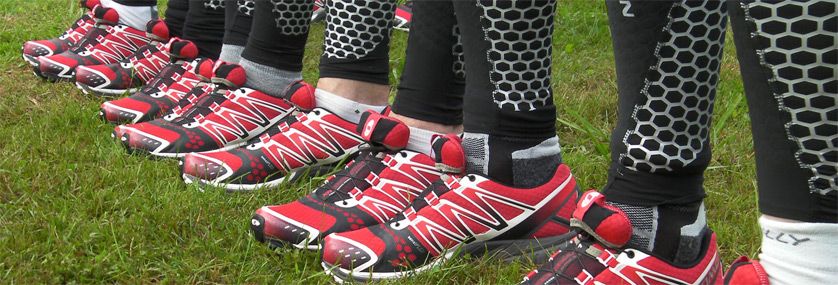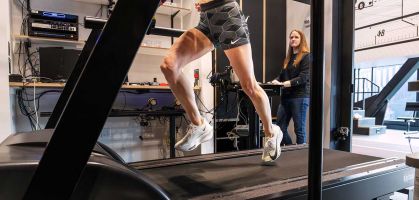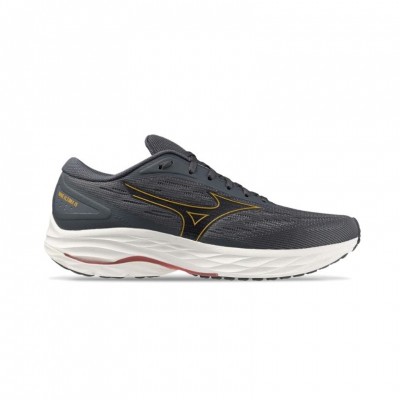A few years ago there were few sports brands that offered trail running shoes. Some companies bet and started with unique and specific material for these terrains and others included some model in their offer of running shoes.
Listen to podcast
In a few years the bet on this specialty has taken a big leap and there is a wide range of material at our disposal. The competition between brands is high but all contribute their bit and strive to innovate new material and launch into the future the specialty that we like most; MOUNTAIN RUNNING.
Sometimes it is difficult to choose between one model or another given the wide market at our disposal and especially when one has no experience in this specialty.
This would be the first question we should ask ourselves when choosing a trail running shoe, what do I want the shoe for?
To answer this question we will have to take into account the following factors:
PERSONAL FACTORS
RUNNER WEIGHT
The weight of the runner greatly influences the choice. We will have to take into account the cushioning of the model to suit our characteristics and provide good protection to our joints at each impact, the heavier the runner is. Each brand has its own type of compound and each model offers different densities. Some have extra cushioning at the points of direct contact with the ground to soften the landing of the foot.
SIZE
It is essential to get your size right. Normally all brands follow universal sizes, specified on the shoe, but the last or construction of each model can make some fit more or less to your foot being the same size. Especially in the toe and heel fit.
It is usually advisable to try on the model late in the day when your feet are warm, try on different sizes and walk around with them for a while before deciding on your correct size in that particular model.
It is very advisable not to wear them tight at the toe, as the tip of your toes will suffer special pressure on long, hard descents. If in doubt, go half a size larger as long as the last fits your foot well.
TYPE OF FOOTPAT
Some models have a reinforcement on the inside to prevent excessive pronation on uneven terrain and over long distances. Pronation is the inward rotation of the foot when running. It is a natural movement that helps the legs to soften the impact. If it is excessive (hyperpronation) or reduced (supination) it will affect your running form and can increase the risk of injury. This is why your stride type is an important factor in choosing the right shoe.
Some models correct this rotation with an insert on the inner side or with a slightly stiffer rubber density. The objective is the same: to keep the shoe stable and prevent it from deforming quickly.
Before choosing one model or another, it is a good idea to consult a specialist or to have an analysis of your footprint in static and in motion in order to determine which shoe is best suited to your characteristics. In the case of using specific insoles, there are models with a slightly wider last in which the placement of the insole is better adapted.
PURPOSE
COMPETITION OR TRAINING?
As in other athletic disciplines, it is convenient to use one model or another depending on the distance or if you are going to train or compete.
During training, it is advisable to use a model with good cushioning that is proportional to the greater weight of the model. This will give you the comfort and protection you need to run for many kilometers.
For racing or intense training you can opt for a lighter and less cushioned model that will allow you to have a quick response and feel for the terrain.
DISTANCE
This factor must also be taken into account since our feet will be rewarded if we choose the right model for each occasion.
- In training or long distance competitions (ultra trail) look for a comfortable and well cushioned model.
- For shorter distances and depending on your intention, look for a more agile and responsive shoe.
- For very short distances and uphill (vertical kilometer) you will need a very light model, minimally protected and with aggressive cushioning that will allow you to climb as fast as possible.
ENVIRONMENTAL CONDITIONS
SURFACE
The terrain conditions will determine the choice of one model or another.
If in your outings you combine asphalt and mountain, there are models within the range DOOR TO TRAIL of SALOMON brand that allow you to run comfortably on both surfaces. This firm specializing in Trail running also bets on specific models to simulate mountain conditions in the same city within its CITY TRAIL range.
If you run on trails or paths with little difficulty there are mixed models that can be adjusted to that need.
In mountain terrain, the characteristics of the terrain must be taken into account:
- When it is very muddy, especially in rainy weather, an aggressive tread pattern will help you to traction properly.
- On very technical terrain, the perfect fit and low profile of the model will give you the necessary security to run with agility.
WEATHER
We must take into account the season in which we run. In humid environments a waterproof membrane can provide the necessary impermeability for long runs.
On the other hand, on hot days, the breathability of the model will give us an extra freshness to our feet to avoid chafing or blisters.
DETAILS IN THE CHOICE OF SHOE:
A. REINFORCEMENTS:
It is advisable to keep an eye on the toe and side reinforcements. The toe reinforcement will protect the toes against impacts from rocks, branches or roots. The side reinforcements will extend the life of the model in those areas most exposed to friction or the point where the shoe folds at each impulse. This area is especially the one that marks the fastest wear of the model, so it is advisable to pay attention to the details in this area.
B. OUTSOLE
The layout of the cleat, its material and its height will make a model more suitable for one or another terrain.
- A large space between lugs helps to avoid excessive mud accumulation in muddy areas.
- A high cleat helps traction but care must be taken in smooth stone areas because the contact surface is smaller and grip will be reduced.
- A low heel and varied sole will be the most advisable in mixed terrain.
C. LACING SYSTEM.
The most common are laces or laces with a tensioner. The most important thing is that the model fits correctly to the foot as a whole and closes well the tongue area to avoid the entrance of pebbles. Check the insole of the shoe, some are thicker than others and have holes to increase breathability.
D. WEIGHT
It varies a lot from one model to another.
A training model for medium-high weights will be above 300gr. You will then enjoy a well cushioned and well protected with numerous reinforcements.
For lighter runners, shoes slightly lighter or below 300g are appropriate, depending on your needs.
For competition or specific training we can find models with a very tight weight that allow us to move very fast. Within the trend of recent years of
Minimalism, we use models with little protection and with the minimum of details, betting for a natural running, both mechanically and in sensations.
E. STABILITY/CUSHIONING
The balance between both factors will mark the success of a model and of your choice.
A very cushioned and high profile model will be somewhat more unstable and the ground feel will be less. On the other hand, your feet will be well protected from objects on the ground.
The lower and thinner one will keep your feet close to the ground giving you a better feel and stability, but you will notice more the pebbles or branches on the road.
5 tips that will be very useful
Experience and trying shoes of different characteristics or brands will clarify which are the most suitable models for your interests. Since the factors for using one model or another are very varied, it is advisable to have a good closet with several models. In this way you will extend the life of all of them, you will avoid injuries and at the same time you will be prepared for any need.
- Try not to use new shoes for long training sessions or competitions.
- Use Vaseline or similar on your feet to avoid chafing or blisters, especially on long distances.
- Be well advised by specialized personnel until you have enough experience to decide for yourself.
- Use good socks appropriate for each climate and with reinforcements in the areas of greatest friction.
- Every time you use your shoes, ventilate them properly by removing the insole for proper drying.
Read more news about: Running News



















